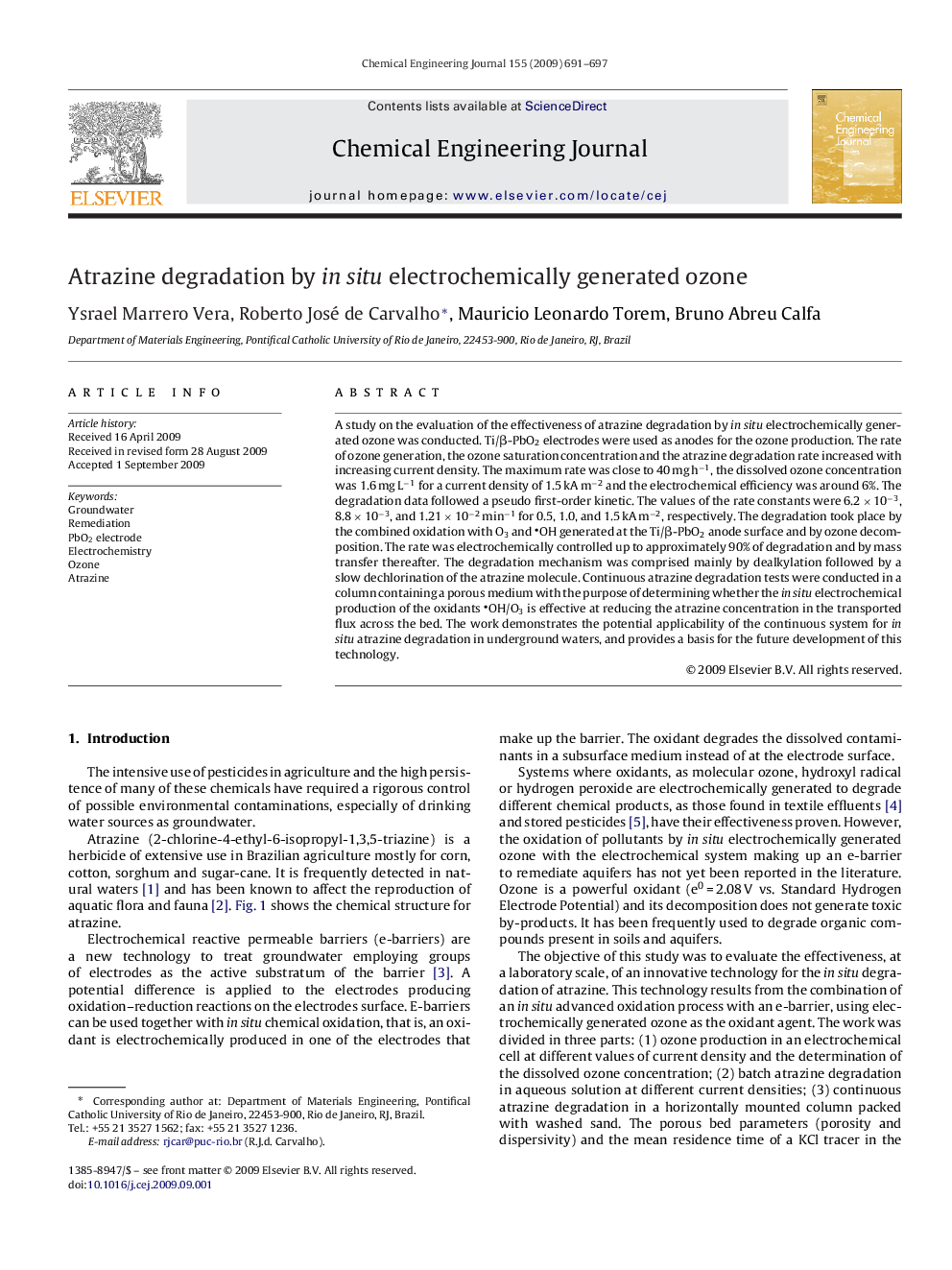| کد مقاله | کد نشریه | سال انتشار | مقاله انگلیسی | نسخه تمام متن |
|---|---|---|---|---|
| 151883 | 456482 | 2009 | 7 صفحه PDF | دانلود رایگان |

A study on the evaluation of the effectiveness of atrazine degradation by in situ electrochemically generated ozone was conducted. Ti/β-PbO2 electrodes were used as anodes for the ozone production. The rate of ozone generation, the ozone saturation concentration and the atrazine degradation rate increased with increasing current density. The maximum rate was close to 40 mg h−1, the dissolved ozone concentration was 1.6 mg L−1 for a current density of 1.5 kA m−2 and the electrochemical efficiency was around 6%. The degradation data followed a pseudo first-order kinetic. The values of the rate constants were 6.2 × 10−3, 8.8 × 10−3, and 1.21 × 10−2 min−1 for 0.5, 1.0, and 1.5 kA m−2, respectively. The degradation took place by the combined oxidation with O3 and OH generated at the Ti/β-PbO2 anode surface and by ozone decomposition. The rate was electrochemically controlled up to approximately 90% of degradation and by mass transfer thereafter. The degradation mechanism was comprised mainly by dealkylation followed by a slow dechlorination of the atrazine molecule. Continuous atrazine degradation tests were conducted in a column containing a porous medium with the purpose of determining whether the in situ electrochemical production of the oxidants OH/O3 is effective at reducing the atrazine concentration in the transported flux across the bed. The work demonstrates the potential applicability of the continuous system for in situ atrazine degradation in underground waters, and provides a basis for the future development of this technology.
Journal: Chemical Engineering Journal - Volume 155, Issue 3, 15 December 2009, Pages 691–697